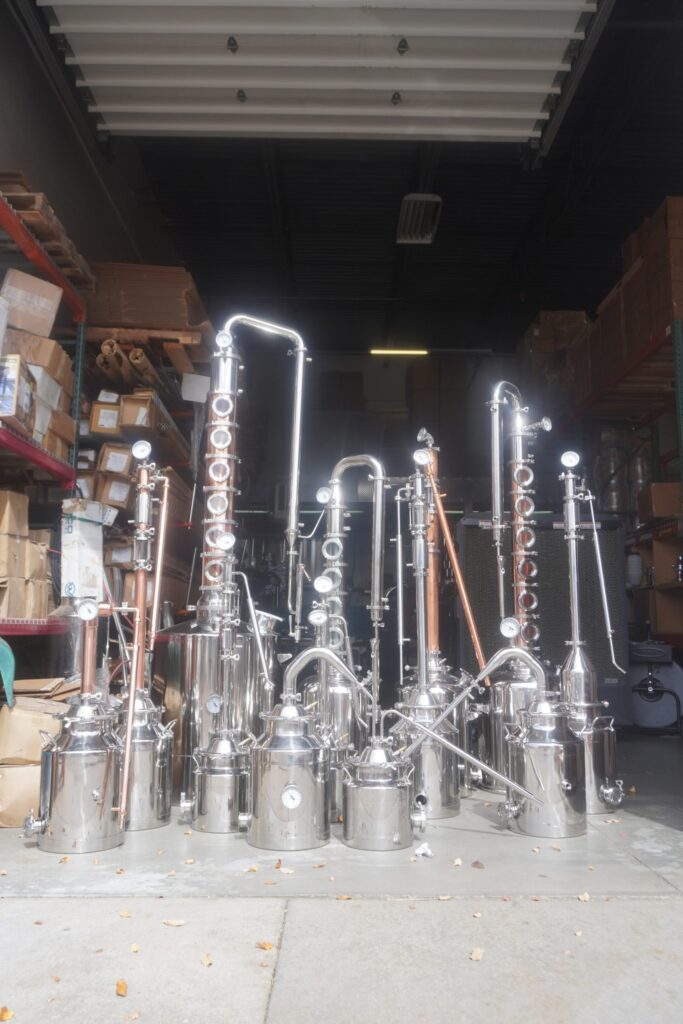Safety First – Choosing the Right Home Distillation Setup Components
Safety is paramount when it comes to setting up a home distillation system. Choosing the right components is crucial to ensure a safe and effective process. One of the fundamental components to consider is the distillation apparatus itself. Opting for high-quality materials, such as stainless steel or copper, is essential to prevent any unwanted reactions between the distillate and the apparatus. Stainless steel is known for its corrosion resistance, while copper has excellent heat conductivity. Both materials contribute to the efficiency and safety of the distillation process. Additionally, it is vital to select a distillation apparatus with proper seals and joints to prevent leaks and maintain airtight conditions. Another critical component is the heat source used in the distillation process. Electric heating elements are a popular choice due to their precision and control. When using an electric heat source, it is important to invest in a reliable temperature control system to regulate the heating process and prevent overheating.
Safety features such as automatic shut-off mechanisms can provide an extra layer of protection against potential hazards. Alternatively, for those using open flames, like gas burners, it is essential to operate them in a well-ventilated area, away from flammable materials, and have a fire extinguisher on hand. The condenser is another key component that plays a significant role in safety. There are various types of condensers, including air-cooled and water-cooled options. Water-cooled condensers are more efficient in dissipating heat, but it is crucial to ensure a proper water supply and avoid any blockages in the cooling system. Regular maintenance is essential to prevent the buildup of mineral deposits that can compromise the condenser’s performance. Additionally, home distillation equipment using a condenser with a reflux system can enhance the purity of the distillate by preventing impurities from reaching the final product. Safety also involves considering the type of containers used for collecting and storing the distillate.
 Glass containers are often preferred for their inert nature, preventing any unwanted reactions with the distillate. However, it is crucial to choose borosilicate glass, known for its durability and resistance to thermal shock. Plastic containers should be avoided, as they can release harmful chemicals when exposed to high-proof alcohol. Furthermore, a reliable pressure release system is a must to prevent the build-up of pressure in the distillation apparatus. This can be achieved through the use of pressure relief valves or vents designed to release excess pressure in a controlled manner. Regular inspection and testing of these safety features are essential to ensure their proper functioning. In conclusion, prioritizing safety when choosing home distillation setup components is non-negotiable. From the materials of the distillation apparatus to the type of heat source, condenser, and collection containers, every element should be carefully selected to minimize risks and ensure a secure distillation process. Regular maintenance, proper ventilation, and adherence to safety guidelines contribute to a safer home distillation experience.
Glass containers are often preferred for their inert nature, preventing any unwanted reactions with the distillate. However, it is crucial to choose borosilicate glass, known for its durability and resistance to thermal shock. Plastic containers should be avoided, as they can release harmful chemicals when exposed to high-proof alcohol. Furthermore, a reliable pressure release system is a must to prevent the build-up of pressure in the distillation apparatus. This can be achieved through the use of pressure relief valves or vents designed to release excess pressure in a controlled manner. Regular inspection and testing of these safety features are essential to ensure their proper functioning. In conclusion, prioritizing safety when choosing home distillation setup components is non-negotiable. From the materials of the distillation apparatus to the type of heat source, condenser, and collection containers, every element should be carefully selected to minimize risks and ensure a secure distillation process. Regular maintenance, proper ventilation, and adherence to safety guidelines contribute to a safer home distillation experience.